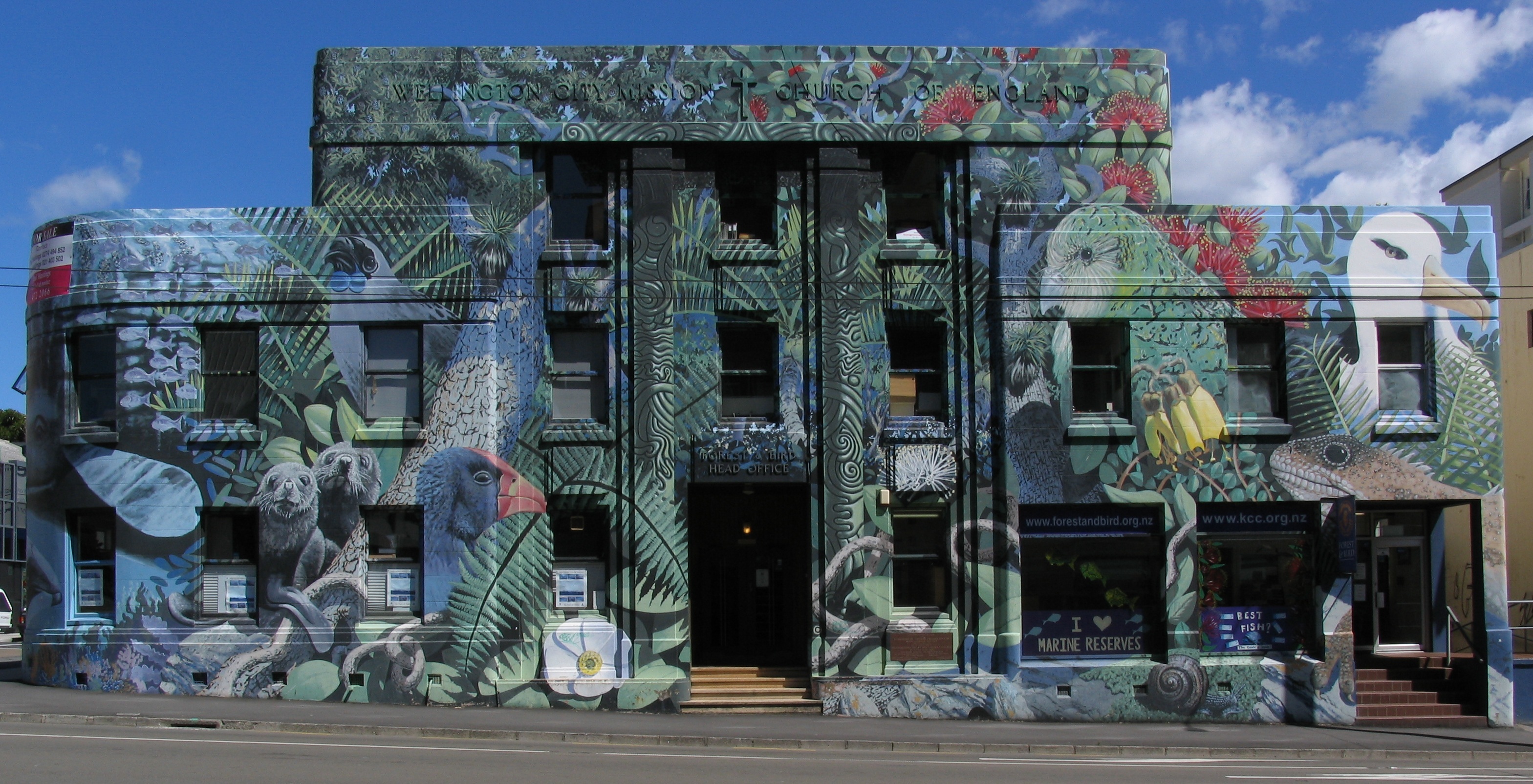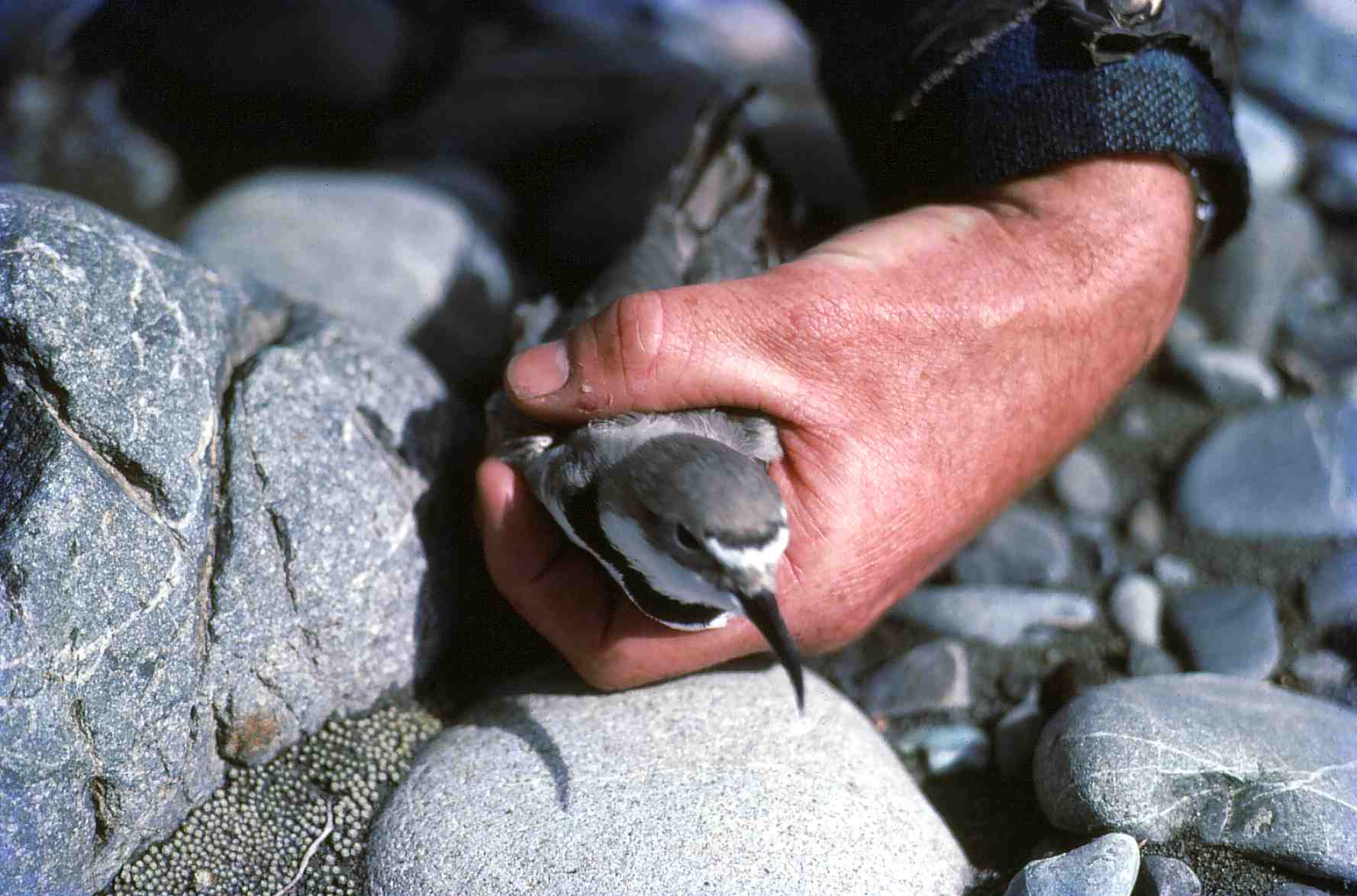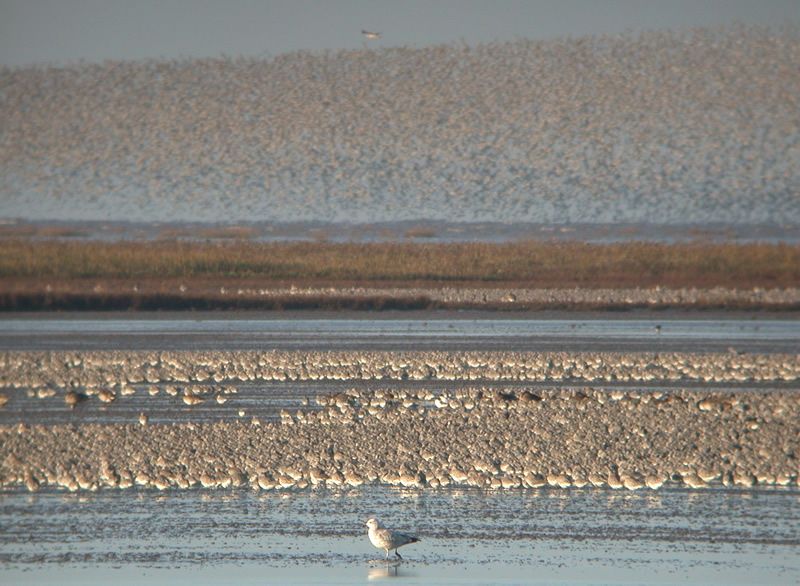|
Motu Manawa (Pollen Island) Marine Reserve
Motu Manawa-Pollen Island Marine Reserve is a protected area in the Waitemata Harbour in Auckland, New Zealand, established in 1996. It includes the entire area between Rosebank Peninsula and Waterview, and surrounds Motumānawa / Pollen Island and Traherne Island. Its northeastern boundary runs roughly parallel to Rosebank Peninsula, from the mouth of the Oakley Creek estuary. Its northernmost boundary is north of Pollen Island, at the same latitude as the tip of Point Chevalier. Its westernmost point is in the mouth of the Whau River, between the tip of Rosebank Peninsula and Te Atatū. It is bisected by the Northwestern Motorway. History The marine reserve was established in 1996. Biodiversity The marine reserve includes intertidal mudflats, tidal channels, mangrove swamp, salt marsh and shellbanks. The intertidal ecosystem of the reserve is home to number of plant species, including '' Selliera radicans'', '' Juncus kraussii'' and '' Apodasmia similis''. The mud ... [...More Info...] [...Related Items...] OR: [Wikipedia] [Google] [Baidu] |
Northwestern Motorway
The Northwestern Motorway (also known historically as the Auckland–Kumeu Motorway), part of (SH 16), is the major western route and secondary northern route out of Auckland in New Zealand. Twenty-one kilometres in length, the motorway runs from Stanley St in Parnell through the Central Motorway Junction, and west through Central Auckland and West Auckland before continuing northwest and terminating outside of Kumeū. Its western terminus is at Brigham Creek Road in Whenuapai. A large part of it forms the middle section of the Western Ring Route. History The first section of the Northwestern Motorway, from Waterview to Te Atatū, was finished in 1952.About the City – The History (from the |
Department Of Conservation (New Zealand)
The Department of Conservation (DOC; Māori: ''Te Papa Atawhai'') is the public service department of New Zealand charged with the conservation of New Zealand's natural and historical heritage. An advisory body, the New Zealand Conservation Authority (NZCA) is provided to advise DOC and its ministers. In addition there are 15 conservation boards for different areas around the country that provide for interaction between DOC and the public. Function Overview The department was formed on 1 April 1987, as one of several reforms of the public service, when the ''Conservation Act 1987'' was passed to integrate some functions of the Department of Lands and Survey, the Forest Service and the Wildlife Service. This act also set out the majority of the department's responsibilities and roles. As a consequence of Conservation Act all Crown land in New Zealand designated for conservation and protection became managed by the Department of Conservation. This is about 30% of New Z ... [...More Info...] [...Related Items...] OR: [Wikipedia] [Google] [Baidu] |
Waitematā Harbour
Waitematā Harbour is the main access by sea to Auckland, New Zealand. For this reason it is often referred to as Auckland Harbour, despite the fact that it is one of two harbours adjoining the city. The harbour forms the northern and eastern coasts of the Auckland isthmus and is crossed by the Auckland Harbour Bridge. It is matched on the southern side of the city by the shallower waters of the Manukau Harbour. With an area of , it connects the city's main port and the Auckland waterfront to the Hauraki Gulf and the Pacific Ocean. It is sheltered from Pacific storms by Auckland's North Shore, Rangitoto Island, and Waiheke Island. Etymology The oldest Māori name of the harbour was Te Whanga-nui o Toi (The Big Bay of Toi), named after Toi, an early Māori explorer. The name ''Waitematā'' means "Te Mata Waters", which according to some traditions refers to a mauri stone (a stone of Māori religious significance) called Te Mata, which was placed on Boat Rock (in the ha ... [...More Info...] [...Related Items...] OR: [Wikipedia] [Google] [Baidu] |
1996 Establishments In New Zealand
File:1996 Events Collage.png, From left, clockwise: A bomb explodes at Centennial Olympic Park in Atlanta, set off by a radical anti-abortionist; The center fuel tank explodes on TWA Flight 800, causing the plane to crash and killing everyone on board; Eight people die in a blizzard on Mount Everest; Dolly the Sheep becomes the first mammal to have been cloned from an adult somatic cell; The Port Arthur Massacre occurs on Tasmania, and leads to major changes in Australia's gun laws; Macarena, sung by Los del Río and remixed by The Bayside Boys, becomes a major dance craze and cultural phenomenon; Ethiopian Airlines Flight 961 crash-ditches off of the Comoros Islands after the plane was hijacked; the 1996 Summer Olympics are held in Atlanta, marking the Centennial (100th Anniversary) of the modern Olympic Games., 300x300px, thumb rect 0 0 200 200 Centennial Olympic Park bombing rect 200 0 400 200 TWA FLight 800 rect 400 0 600 200 1996 Mount Everest disaster rect 0 200 300 400 19 ... [...More Info...] [...Related Items...] OR: [Wikipedia] [Google] [Baidu] |
Protected Areas Established In 1996
Protection is any measure taken to guard a thing against damage caused by outside forces. Protection can be provided to physical objects, including organisms, to systems, and to intangible things like civil and political rights. Although the mechanisms for providing protection vary widely, the basic meaning of the term remains the same. This is illustrated by an explanation found in a manual on electrical wiring: Some kind of protection is a characteristic of all life, as living things have evolved at least some protective mechanisms to counter damaging environmental phenomena, such as ultraviolet light. Biological membranes such as bark on trees and skin on animals offer protection from various threats, with skin playing a key role in protecting organisms against pathogens and excessive water loss. Additional structures like scales and hair offer further protection from the elements and from predators, with some animals having features such as spines or camouflage servin ... [...More Info...] [...Related Items...] OR: [Wikipedia] [Google] [Baidu] |
Protected Areas Of The Auckland Region
Protection is any measure taken to guard a thing against damage caused by outside forces. Protection can be provided to physical objects, including organisms, to systems, and to intangible things like civil and political rights. Although the mechanisms for providing protection vary widely, the basic meaning of the term remains the same. This is illustrated by an explanation found in a manual on electrical wiring: Some kind of protection is a characteristic of all life, as living things have evolved at least some protective mechanisms to counter damaging environmental phenomena, such as ultraviolet light. Biological membranes such as bark on trees and skin on animals offer protection from various threats, with skin playing a key role in protecting organisms against pathogens and excessive water loss. Additional structures like scales and hair offer further protection from the elements and from predators, with some animals having features such as spines or camouflage serving ... [...More Info...] [...Related Items...] OR: [Wikipedia] [Google] [Baidu] |
Forest And Bird
Forest & Bird ( mi, Te Reo o te Taiao), also known by its formal name as the Royal Forest and Bird Protection Society of New Zealand, is an environmental organisation specialising in the protection and conservation of New Zealand's indigenous flora and fauna and unique wild places and natural ecosystems. Forest & Bird consists of 47 branches located in urban and rural centres throughout New Zealand. Branches are actively engaged in conservation projects and advocacy on a community, regional and national basis. Forest & Bird has offices and staff located in Auckland, Christchurch, Wellington, Nelson and Dunedin. Forest & Bird publishes a quarterly magazine ''Forest & Bird'', one of New Zealand's definitive natural history and conservation publications. Forest & Bird has published a comprehensive commentary book on environmental law in New Zealand. Forest & Bird are also actively engaged in advocating and lobbying for resource management law and practices to more consistently prot ... [...More Info...] [...Related Items...] OR: [Wikipedia] [Google] [Baidu] |
Marine Reserves Of New Zealand
New Zealand has 44 marine reserves (as of August 2020) spread around the North, the South Island, and neighbouring islands, and on outlying island groups. They are governed by the Marine Reserves Act 1971 and administered by the Department of Conservation with assistance from the Ministry of Fisheries, New Zealand Customs and the New Zealand Defence Forces. History The Marine Reserves Act was passed by the Parliament of New Zealand in 1971. In 2000 the Department of Conservation started a review of the Act resulting in a draft Marine Reserves Bill that was introduced into Parliament in June 2002, but has not yet been voted on. The first marine reserve to be created was the Cape Rodney-Okakari Point Marine Reserve. The Poor Knights Islands Marine Reserve was established next, although with only a partial ban on fishing; a full ban was implemented in 1998. The first two marine reserves in Fiordland were established at the request of New Zealand Federation of Commercial Fishe ... [...More Info...] [...Related Items...] OR: [Wikipedia] [Google] [Baidu] |
Wrybill
The wrybill or (in Māori) ngutuparore (''Anarhynchus frontalis'') is a species of plover endemic to New Zealand. It is the only species of bird in the world with a beak that is bent sideways in one direction, always to the right (in the crossbills, e.g. ''Loxia pytyopsittacus'', the tips of the upper and lower mandibles cross because they are bent sideways in opposite directions, sometimes left over right and sometimes right over left). A 2015 study found it to be within the ''Charadrius'' clade, with other New Zealand plovers its closest relatives; the nearest being the New Zealand dotterel or New Zealand plover (''Charadrius obscurus''), and then the double-banded plover or banded dotterel (''Charadrius bicinctus''). It lays its eggs among the rocks along rivers and distracts intruders by pretending to be in distress and moving away from its clutch. It is rated as vulnerable on the International Union for Conservation of Nature (IUCN)'s Red List of Threatened Species. Taxono ... [...More Info...] [...Related Items...] OR: [Wikipedia] [Google] [Baidu] |
Pied Oystercatcher
The pied oystercatcher (''Haematopus longirostris'') is a species of oystercatcher. It is a wading bird native to Australia and commonly found on its coastline. The similar South Island pied oystercatcher (''H. finschi'') occurs in New Zealand. Description The name "oystercatcher" is something of a misnomer for this species, because they seldom eat oysters, which are found mainly on rocky coastlines. Pied oystercatchers frequent sandy coastlines, where they feed mainly on bivalve molluscs, which are prised apart with their specially adapted bill. These adaptations allow the Pied oystercatchers to slip their bills between the ventral edges of these shelled organisms, further allowing them to sever the shells and reach the edible flesh inside. This Australian species is easily recognized by the characteristic 5–8 cm long orange-red beak, slender pink legs and black and white plumage. With the wings extended, a white wing-stripe is also visible. The male and female sho ... [...More Info...] [...Related Items...] OR: [Wikipedia] [Google] [Baidu] |
Bar-tailed Godwit
The bar-tailed godwit (''Limosa lapponica'') is a large and strongly migratory wader in the family Scolopacidae, which feeds on bristle-worms and shellfish on coastal mudflats and estuaries. It has distinctive red breeding plumage, long legs, and a long upturned bill. Bar-tailed godwits breed on Arctic coasts and tundra from Scandinavia to Alaska, and overwinter on coasts in temperate and tropical regions of Australia and New Zealand. The migration of the subspecies ''Limosa lapponica baueri'' across the Pacific Ocean from Alaska to New Zealand is the longest known non-stop flight of any bird, and also the longest journey without pausing to feed by any animal. The round-trip migration for this subspecies is over . Taxonomy The bar-tailed godwit was formally described by the Swedish naturalist Carl Linnaeus in 1758 in the tenth edition of his '' Systema Naturae'' under the binomial name ''Scolopax limosa''. It is now placed with three other godwits in the genus ''Limosa'' that ... [...More Info...] [...Related Items...] OR: [Wikipedia] [Google] [Baidu] |
Red Knot
The red knot or just knot (''Calidris canutus'') is a medium-sized shorebird which breeds in tundra and the Arctic Cordillera in the far north of Canada, Europe, and Russia. It is a large member of the ''Calidris'' sandpipers, second only to the great knot. Six subspecies are recognised. Their diet varies according to season; arthropods and larvae are the preferred food items at the breeding grounds, while various hard-shelled molluscs are consumed at other feeding sites at other times. North American breeders migrate to coastal areas in Europe and South America, while the Eurasian populations winter in Africa, Papua New Guinea, Australia, and New Zealand. This species forms enormous flocks when not breeding. Taxonomy, systematics, and evolution The red knot was first described by Carl Linnaeus in his landmark 1758 10th edition of ''Systema Naturae'' as ''Tringa canutus''. One theory is that it gets its name and species epithet from King Cnut; the name would refer to the kn ... [...More Info...] [...Related Items...] OR: [Wikipedia] [Google] [Baidu] |

.jpg)





.jpg)
